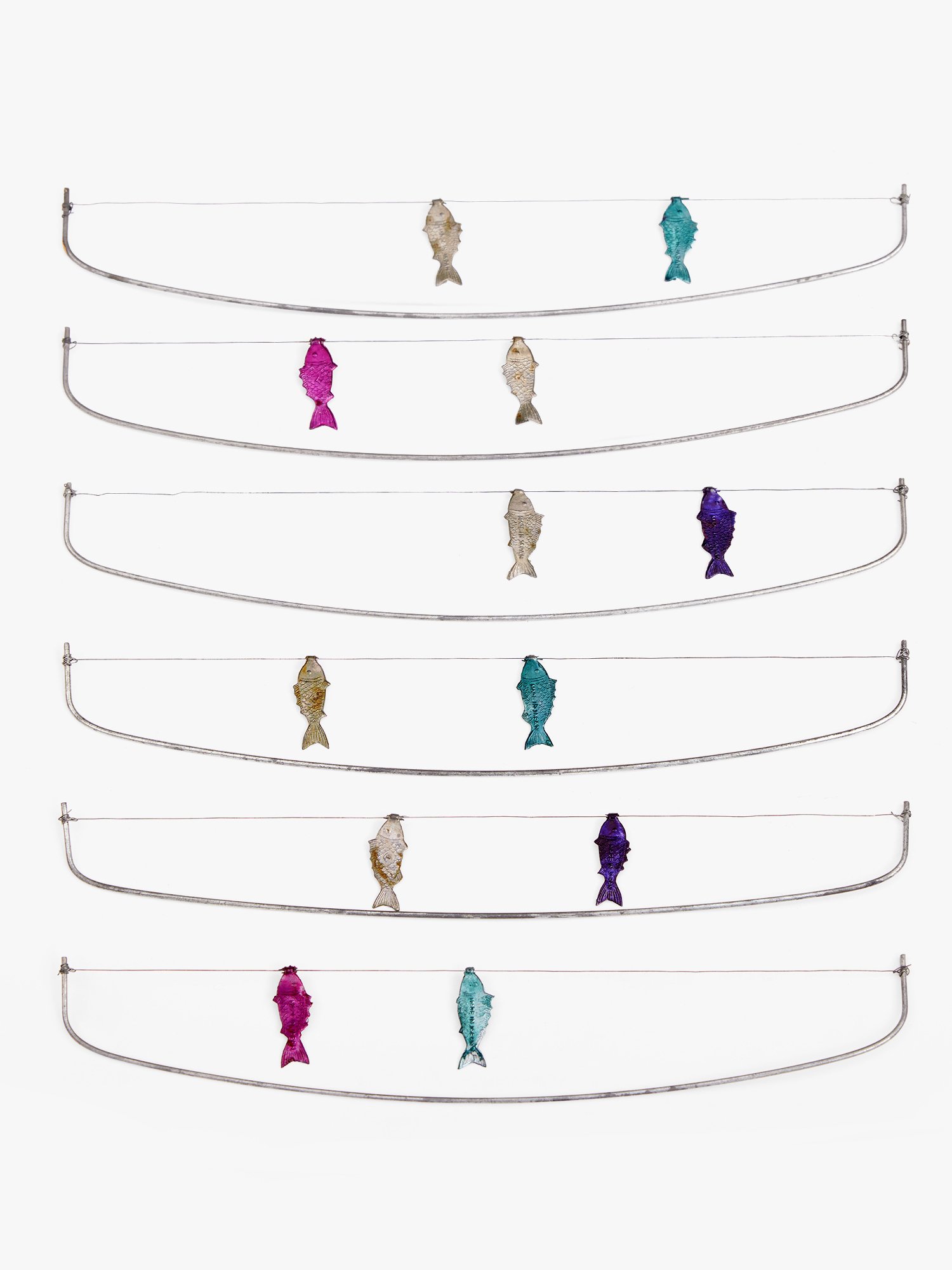Japanese Toy Fish Game
c. 1952
These toys from Japan create the illusion of fish wriggling down a string by use of a curved metal frame that holds a thin wire taut, relying on gravity to slide the fish down the wire. The simple toy makes clever use of its materials’ tensile properties, something that undoubtedly appealed to the Eameses, who experimented intensively with properties of plastics, metals, textiles, and other materials in their own work. They were also likely drawn to its whimsy, a quality they highlighted when they photographed it for their House of Cards construction toy that was introduced in 1952. The House of Cards was inspired by the precarious structures built with conventional card decks, but it offered cards that could create far sturdier structures thanks to six slots arranged around their edges that allowed the cards to be firmly slotted together. House of Cards constructions were also more colorful than typical card towers, thanks to the dozens of different images and patterns that decorated them. The Japanese fish toys appear on a card against a bright red background, layered on top of one another in a way that creates a single cluster of fish. The toys’ wire and metal frames are visible but cropped, making it difficult to picture the individual toys and heightening the illusion of a colorful school of floating fish.
- Medium:Metal, wire, paint
- Dimensions:9 1/4 x 1 1/2 in. (23.5 x 3.8 cm)
- Origin:Japan
- Item:T.2019.2.216.3
